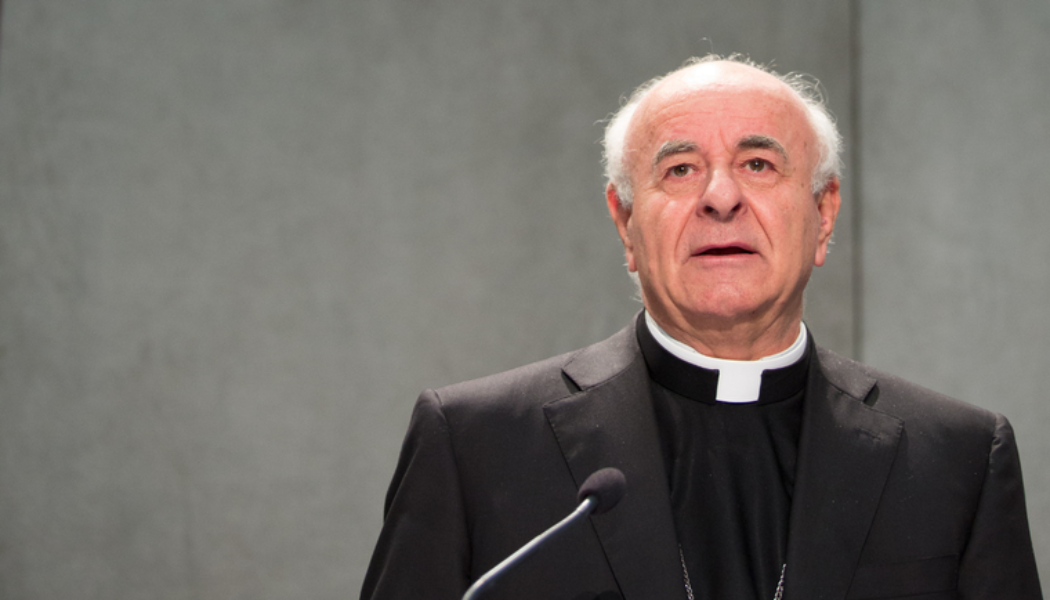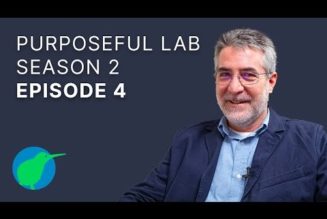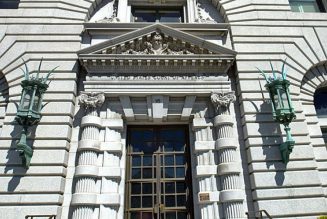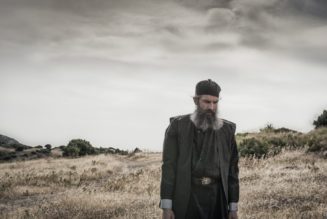
COMMENTARY: As has been the case before, the president of the Pontifical Academy for Life often begins with the political situation and then sees where the Gospel and the Catholic Tradition can fit.
The statement from the Pontifical Academy for Life (PAL) should have been a dog-bites-man story, hardly worth issuing. Yet there it was, affirming that its president, Archbishop Vincenzo Paglia “reiterates his ‘No’ towards euthanasia and assisted suicide, in full adherence to the magisterium.”
In recent years, that the PAL president fully adheres to the magisterium has become, surprisingly, something of a man-bites-dog story. Why that should be is worth noting and speaks to the general environment in Rome.
The PAL was founded by Pope St. John Paul II to advance the Church’s teaching and witness to the sanctity of human life by drawing on the best scholarship from a variety of disciplines. Thus, when Archbishop Paglia said last week that a potential Italian law removing criminal penalties for euthanasia and assisted suicide would be “feasible” and that “legal mediation may be the greatest common good concretely possible under the conditions we find ourselves in,” it struck many as contrary not only to Catholic teaching but the purpose of the PAL.
There was quite a fierce reaction from many Catholic and pro-life circles, especially given the archbishop’s history. He is one of the curious characters that has come to great prominence in the pontificate of Pope Francis.
The details of Archbishop Paglia’s original speech and the subsequent PAL clarification are now well known. This controversy echoed an earlier one, when he called Italy’s abortion law a “pillar” of society. That, too, brought a clarification from PAL, explaining that Archbishop Paglia was simply noting a sociopolitical fact, not endorsing the abortion license itself. His penchant for such statements prompted one Catholic news site to headline its story about this most recent one: “What did Archbishop Paglia say this time?”
Why does Archbishop Paglia speak in a way that appears to be at odds with the magisterium on life issues, especially given that St. John Paul II was exceptionally clear on abortion and euthanasia in his 1995 encyclical Evangelium Vitae?
The answer lies in his starting point. Archbishop Paglia begins with the political situation and then sees where the Gospel and the Catholic Tradition can fit. That approach is not without value, as, often, bishops facing a hostile political environment have to make such calculations. But Archbishop Paglia is not a diocesan bishop having to navigate a delicate practical situation; he is head of an academy that is charged with bringing clarity and light to the Church’s teaching.
In both the latest euthanasia row and previously regarding abortion, the archbishop has taken as his starting point the pragmatism demanded by politics, rather than a prophetic witness. Sometimes political leaders find themselves in complex, even confusing situations — but Archbishop Paglia is not a politician. Yet he managed, by taking his lead from political calculations, to get terribly confused.
In his recent comments on euthanasia, Archbishop Paglia spoke of development in the Church’s teaching on the death penalty. Pope Francis amended the Catechism of the Catholic Church to declare it “inadmissible.” The Holy Father — like John Paul before him — would have seen the teaching on the death penalty and on euthanasia as part of the same principle regarding the sanctity of life.
However, Archbishop Paglia took a different tack, suggesting that if the teaching on the death penalty could develop toward its “inadmissibility” then perhaps the teaching on euthanasia could develop toward its “feasibility.”
From the point of view of Catholic moral teaching, that is an odd and incorrect comparison to make.
From a political point of view, though, it makes sense: The political consensus is against the death penalty in Italy, and Catholic teaching affirms that; so if the political consensus in Italy permits abortion and may favor euthanasia, then it might be feasible for Catholic teaching to accommodate that.
It is the priority of pragmatism over prophetic teaching.
Archbishop Paglia’s most recent blunder, corrected yet again ex post facto by a PAL statement, reflects a wider phenomenon in Rome worth noting. For example, at the same time that the archbishop’s speech was reported, another papal interview was released, in which Pope Francis spoke of his intention to visit Argentina next year in the context of politics.
The decision not to visit Argentina has been a mystery since the beginning of the pontificate 10 years ago. Both John Paul and Benedict visited their home countries within a year of election, and both made three trips within 10 years. Given that Pope Francis has visited many other countries in South America, the decision not to go to Argentina has caused some hurt in his native country. In his interview with La Nacion, Pope Francis explained that it was the political situation that prevented him from visiting.
It is a somewhat implausible explanation. Could that have been the case for an entire decade? If the Holy Father had been as keen to visit his homeland as he was, for example, to visit the Central African Republic or Iraq, would it not have happened by now?
Nevertheless, the answer is instructive. First, the political dynamics are considered, with an evaluation of who might seek to take advantage of the papal visit. Only then do the pastoral priorities get factored in.
One might look to the 2014 visit to Strasbourg, which included only an address to the European Parliament, and not pastoral visits, as another example of the priority of politics.
A pastor has to take account of the political when exercising his prophetic role. Recent events in Rome suggest that the pragmatic has been made the priority.









